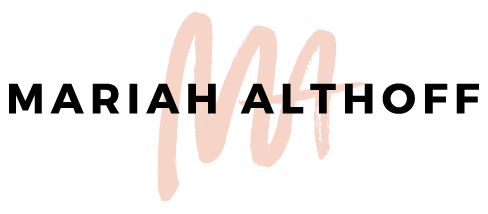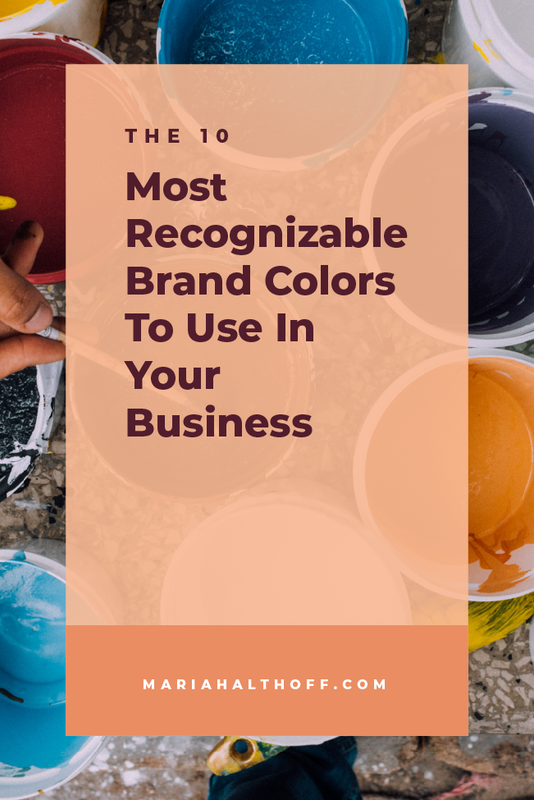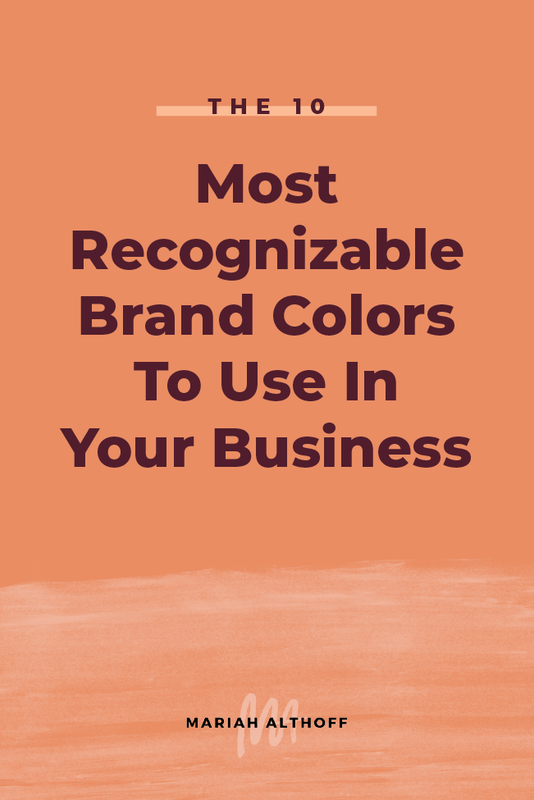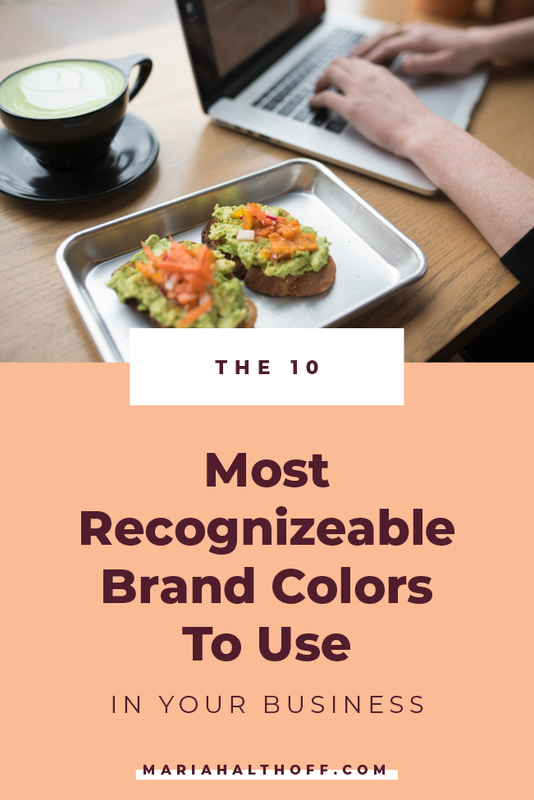The 10 Most Recognizable Brand Colors To Use In Your Business
Ever wonder why Coca-Cola is red and white, or why Pepsi is blue and red?
And why is Starbucks green? What is with that?
These brands didn’t choose their colors accidentally or on a whim - they were entirely deliberate.
For a lot of brands, their colors are just as iconic as their names. When you think of Coca-Cola, you instantly think of red and white.
The funny thing about Coca-Cola is that they settled on red because, according to the company itself, they needed a way to distinguish their bottles from alcohol back in the early days.
Most often, though, a company will choose a color (or colors) based on color theory so that it has as much impact as possible in the marketplace.
It’s all to do with how you sell yourself as a brand. Logo, typography, and color are all key elements that act as identifiers. If you choose the right color, you have a better chance of your brand resonating with the right people.
So, today we’re going to take a look at the 10 most recognizable brand colors to use in your business, and which ones would work best for you.
Related Post –>> How to Create the Perfect Color Palette for Your Brand
But first, let's talk about why color is so important!
Can color affect your mood? It sure can.
Just picture images of the color grey in your mind for a moment. How does it make you feel? Pretty somber, huh? Grey is associated with clouds, rain, puddles, and depression. It’s not a feel-good color.
Next, picture images of the color orange in your mind. Now how do you feel? A bit more upbeat, right? Orange reminds us of the sun and hot, endless summer days. It makes us feel good.
This is important for branding. Each time someone sees your brand and its colors - be it on social media, in person or via email - you want them to feel a certain way.
Colors affect us all on a deep, subconscious level, and this rings true just as much for your customers as anyone else. The color(s) you choose will affect how your target customers feel about your brand. If it doesn’t resonate with them, doesn’t strike a chord, change their mood for the better or represent their own values, they won’t stick around.
Remember, color is an extension of your personality. It’s why outgoing people wear yellow and shy people wear black - and why corporations might use blue and green-minded hipster ventures might use green.
Let’s take a look at the 10 most recognizable brand colors that a business like yours could use - and why.
1. Red
Over the years (and years and years), red has become synonymous with the more fiery elements of our personality.
It connotes anger, passion, fizz, and excitement. It’s bursting with enthusiasm, vitality, and youthfulness.
If your brand has any of those characteristics, red could be the color for you.
On the other hand, if your business is more mature, you may want to overlook this passionate color.
2. Blue
Blue is literally everywhere in the business world, from IBM to Facebook and beyond.
These are companies we trust - and blue is a classic color that incites feelings of trust, bonding, and maturity.
If you want your business to be taken seriously, and especially if you have designs in the corporate world, blue might be the one for you.
3. Green
Green is a bit of an odd one because it has no real cultural connotations per say.
However, green is all about being, well, green.
In other words, environmentally friendly.
If your business - and your customers - care about nature, and if your business and its brand are very green-motivated, you should consider using green for your branding. When we spot it as the dominant color of a logo, it’s not hard to imagine that the company is environmentally focused.
4. Orange
Orange is the ultimate “fun” color. Even more exciting than red - but used less often by brands - orange makes us think of oranges.
That means we associate the color orange with vitamin C - health and freshness.
Orange also evokes enthusiasm, positivity and a sense of adventure. It’s a playful color that resonates with millennials. It makes us feel happy and even young. It’s a color bursting with excitement that works well for brands whose target market is kids and young teens - just like Nickelodeon.
It’s not, however, generally seen as a corporate color. While Amazon uses it, notice how muted their orange is.
5. Grey
Grey is the ultimate color of intrigue. It’s cold, neutral - and totally clinical.
Grey is ideal for corporations who have a serious product for a serious audience. Think of loans, mortgages and so on.
The neat thing about grey is that, as somber as it is, it isn’t too dark.
6. Black
Black is dark. It’s the darkest of the dark. But when it comes to branding, does that mean only the darkest, scariest businesses can use it?
Nope.
The cute thing about color theory and perception is that humans sometimes perceive black as a slick and modern color. There’s actually nothing dark about it! Black, when used right, can make your brand look sophisticated, classy and exclusive.
The problem is that humans also see black as something menacing and disturbing - and this can be problematic if you choose it. So be careful how you use black.
7. Purple
Like pink - which we’ll get to soon - purple is a feminine color.
It’s different to pink. It’s less loud and eye-catching. Instead, it’s a rich color that has regal connotations (it was the color of imperial Rome).
It’s also not used as often as pink, which means that it’s got an exclusive vibe to it. It’s a bit of a luxury, and this creates feelings of luxuriousness, exclusivity - and even magic.
Purple can also be seen as a sad color - it’s all about context and how you use it.
8. White
White isn’t really a color - it’s more of an absence of color.
For brands and their target market, white represents purity, simplicity, and innocence.
It’s the ultimate color for minimal brands who don’t want to overdo things. Sometimes, less is more. If this resonates with your values, you might want to employ white in your branding.
9. Pink
Pink is a girly color, right?
Pink can’t be used for anything other than beauty products, right?
This is mostly true.
Pink is a feminine color, but you have to think carefully who makes up your target audience. For example, in Japan pink is seen as a masculine color.
Moreover pink is a super diverse color, rich in an array of hues and variations. It’s grown to be a symbol of the fight against breast cancer, and therefore has connotations of hope, strength, and resilience.
10. Brown
Brown is an earthy, rugged and manly color. It’s dirty, muddy and not used much in the world of branding. This means that if you use brown, you’ll certainly stand out - but make sure you have a good reason for using it first.
For example, because brown is such a natural color, it makes a lot of sense to use it if you sell organic products. In such an instance, it will resonate with your target audience.
Hopefully, you now understand branding and color better and are in a stronger position to make a choice. Remember that color is all about perception, however, and that how you use a color matters just as much as the color you choose.
Meet this week's guest blogger:
Ryan Stevens is a print expert who enjoys sharing industry knowledge with print enthusiasts all over the web. As CEO of Replica Printing Inc, Ryan is involved with all major printing styles and options on a daily basis.
























